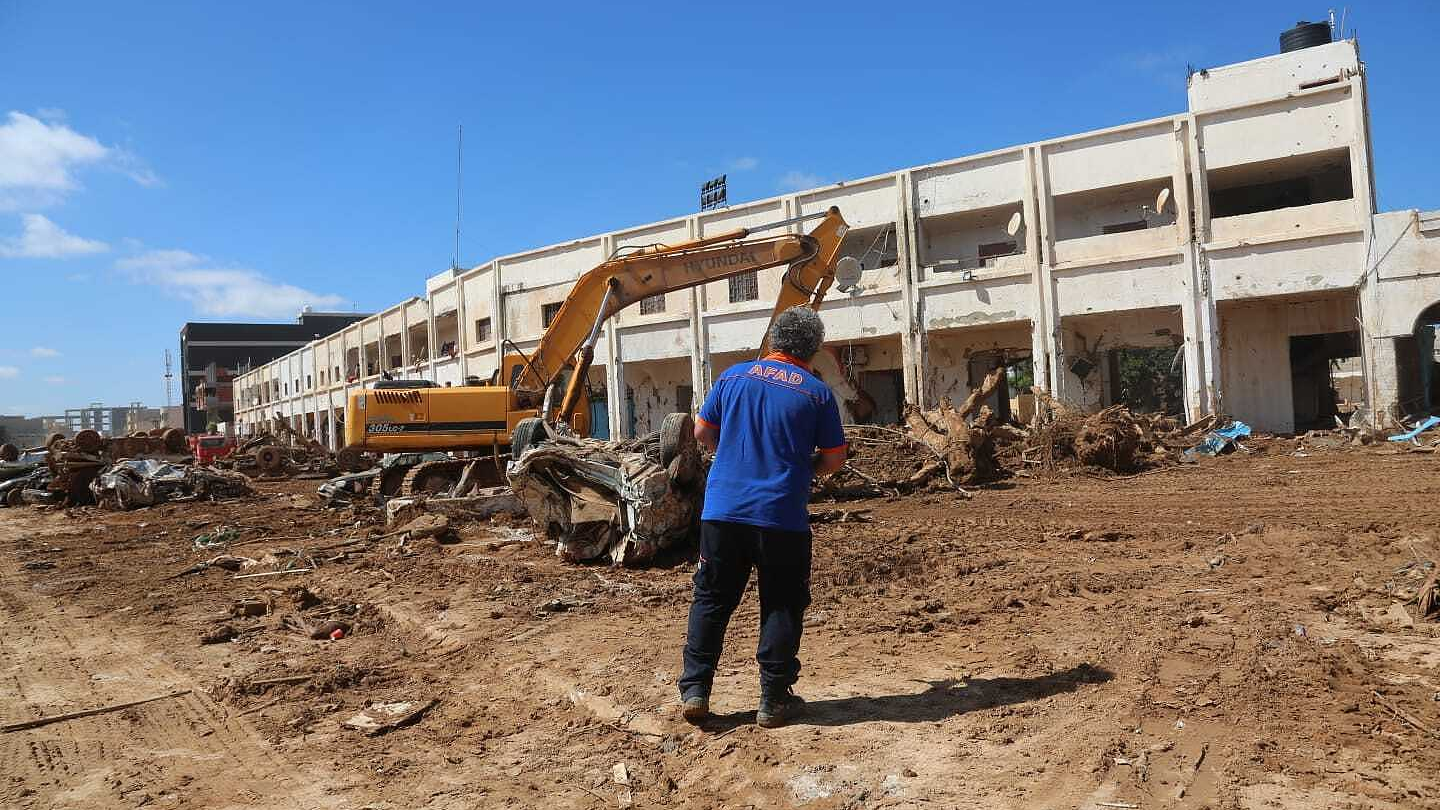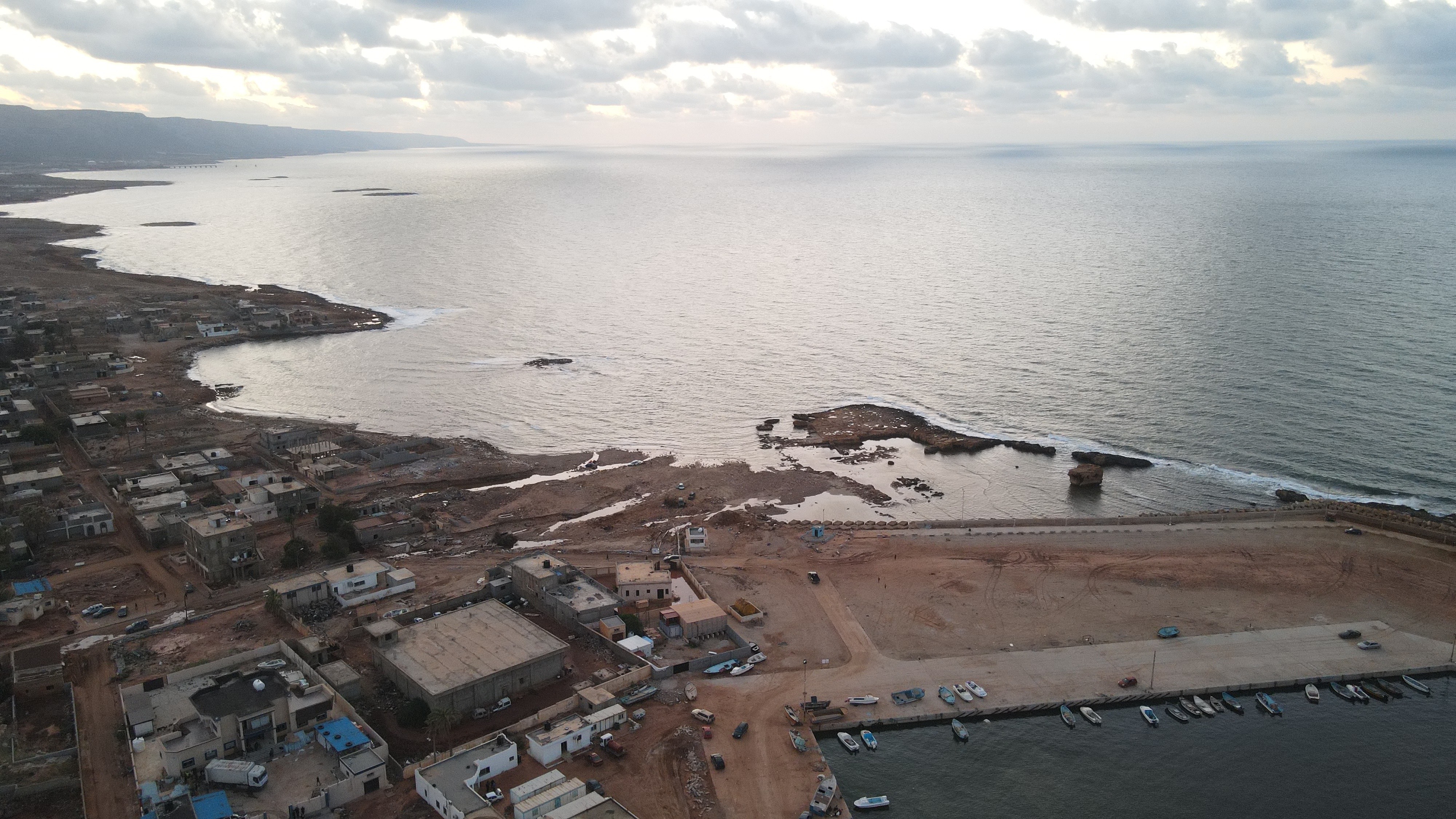
Teams of Türkiye's State Disaster and Emergency Management Authority (AFAD) join search and rescue operations to save lives following devastating floods in Libya, September 14, 2023. /CFP
Teams of Türkiye's State Disaster and Emergency Management Authority (AFAD) join search and rescue operations to save lives following devastating floods in Libya, September 14, 2023. /CFP
As of Thursday, the death toll in Libya's coastal city of Derna has jumped to 11,300 after serious floods were exacerbated by the rupture of two dams due to heavy rain, according to the Libyan Red Crescent.
As search and rescue efforts continue, a further 10,100 people have been reported missing in the Mediterranean city meaning local officials believe the death toll may be much higher than announced. The storm also killed some 170 people in other cities in the country.
Zhu Dingzhen, meteorologist at the China Meteorological Administration, said the reason why Storm Daniel caused such a severe impact to Libya is due to meteorological and geographical factors.
He said Libya is a desert area which is particularly prone to floods when it has heavy rainfall.
"Due to global warming, the Mediterranean region is seeing high sea temperatures this year. Some experts predict that similar storms and cyclones will increase in frequency in the Mediterranean in the future," said Zhu.
As ocean temperatures around the world rise due to global warming, scientists said the temperature rise of the Mediterranean fueled the storm's heavy rainfall in Libya.
"While no formal attribution of the role of climate change in making Storm Daniel more intense has been conducted yet, it is safe to say that the Mediterranean Sea surface temperatures have been considerably above average throughout summer," Karsten Haustein, climate scientist and meteorologist at Leipzig University in Germany, told the Science Media Center, an independent press office for science.
"The warmer water does not only fuel those storms in terms of rainfall intensity, it also makes them more ferocious," he said.
The dams that collapsed in Derna had been built to protect the city from heavy rains, but their collapse made the flooding worse. Petteri Taalas, head of World Meteorological Organization (WMO), told reporters in Geneva that human casualties could have been avoided in the disaster if the country had a functional meteorological service able to issue warnings.
"The emergency management authorities would have been able to carry out the evacuation," said the WMO chief.
Officials in eastern Libya warned the public about the coming storm, and they ordered residents to evacuate coastal areas before the flooding. But there was no warning about the dams collapsing. Local authorities said they didn't expect the storm could be so powerful.

A view of the city of Soussah following floods in Libya, September 14, 2023. /CFP
A view of the city of Soussah following floods in Libya, September 14, 2023. /CFP
France 24's science reporter Shirli Sitbon said that the flooding in Libya is a wake-up call to the dangers of climate change and old infrastructure.
Sitbon said the low-lying shorelines in Libya have already suffered from high temperatures and rising sea levels due to regional desertification and global warming.
Taking floods happening in the United States, Indonesia and Brazil as examples, Sitbon noted that people need to rethink the situation of dams and reservoirs which were built decades ago and manage them in a better way as there's more rainfall in some areas due to climate change.
She also said that houses need to be redesigned with new shapes and materials so that they could be more resilient to strong wind and heavy flood.
In addition to taking climate change seriously, building early warning systems and improving infrastructure, analysts also called for international efforts to speed up rescue efforts.
Reporting from Tripoli, CGTN special correspondent Ahmed Abar said medical teams still find challenges in reaching eastern Derna as roads leading there also collapsed.
"For the past 50 years, the Libyan authorities never had a chance to face a similar natural catastrophe, which makes it more difficult due to the lack of expertise, the technical human resources and equipment for the rescue operations," Abar said.
He added that the situation is expected to improve over the next 48 hours as more rescue teams are arriving after Libyans asked for international solidarity in providing technical rescue support.
The World Health Organization estimates the disaster has affected up to 1.8 million people in Libya. Despite the fading hope of finding more flood survivors, rescuers from Türkiye, Egypt, Tunisia, Algeria and Malta are still working in the field with Libyan soldiers, staff from the Libyan Red Crescent and local teams in the eastern city of Derna. More than 500 people have been rescued in Derna as of Thursday, reported local media.